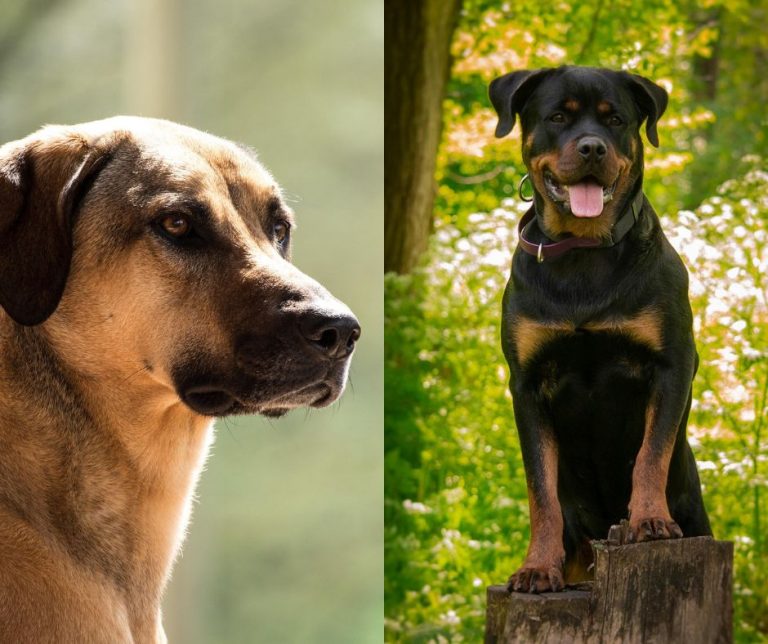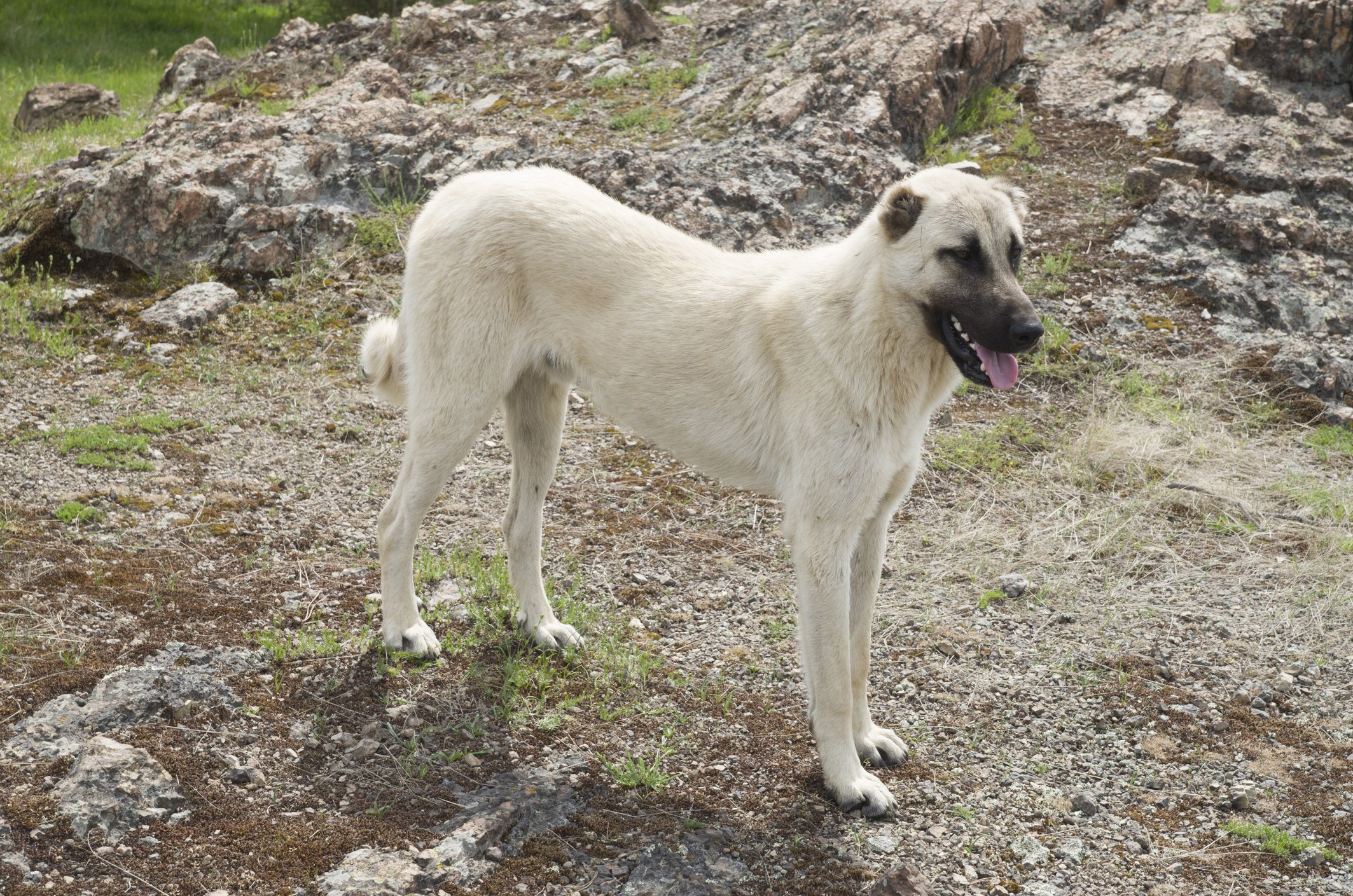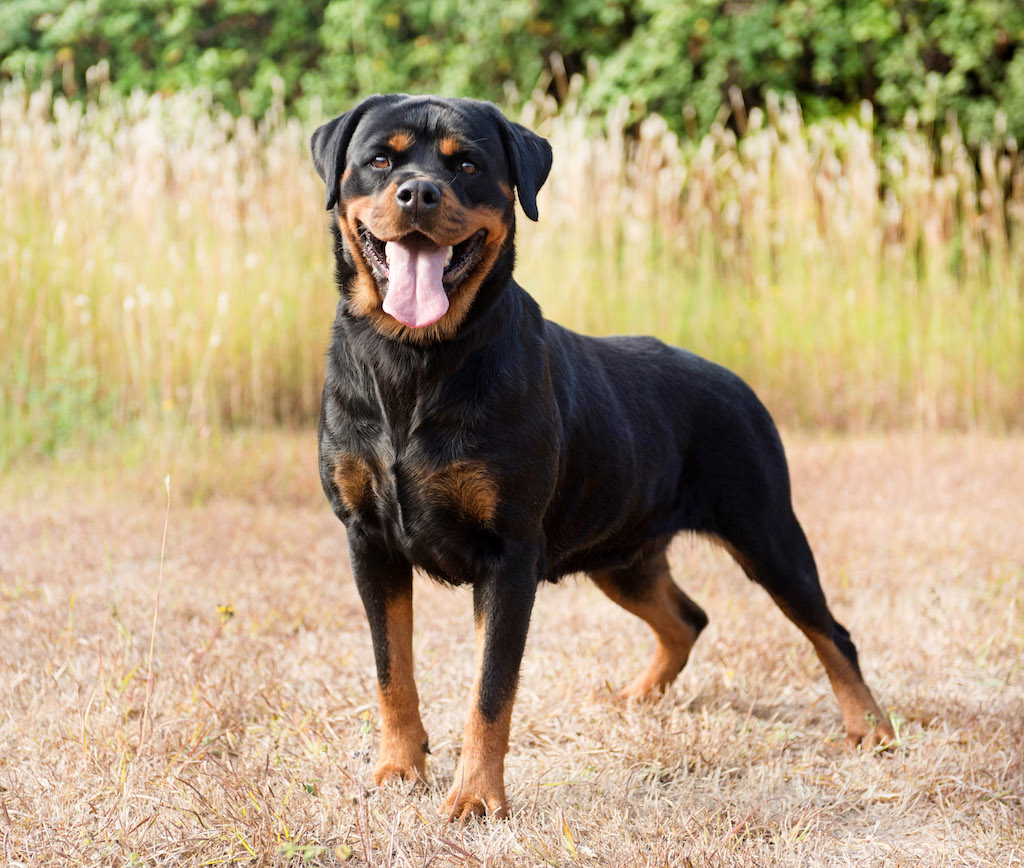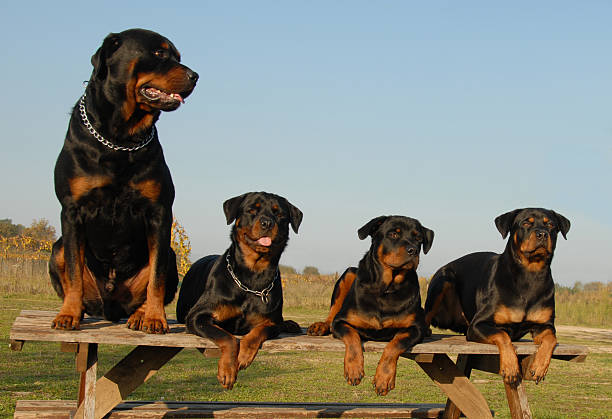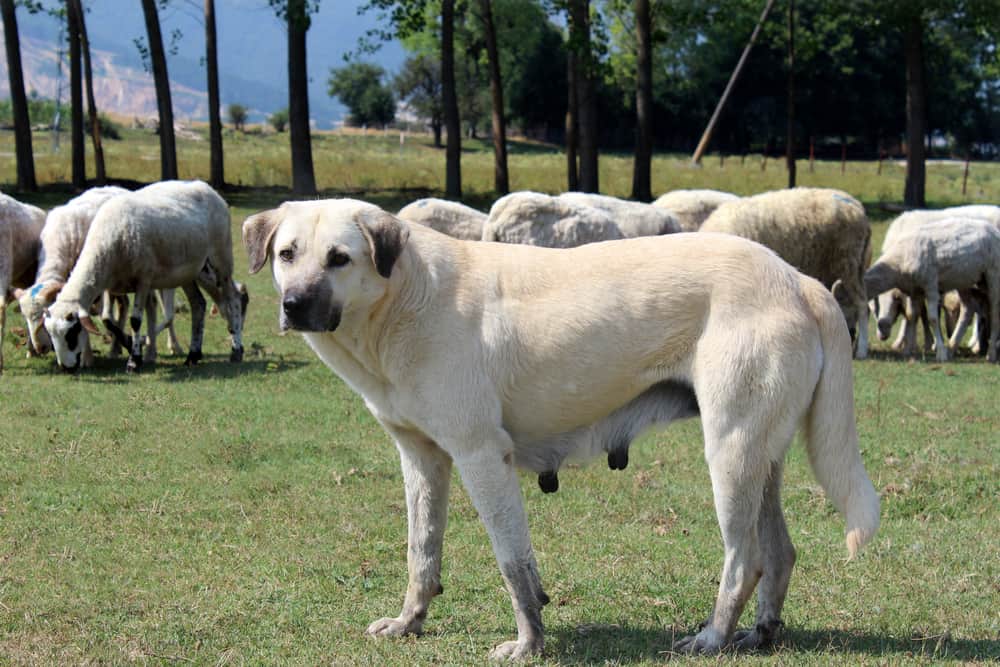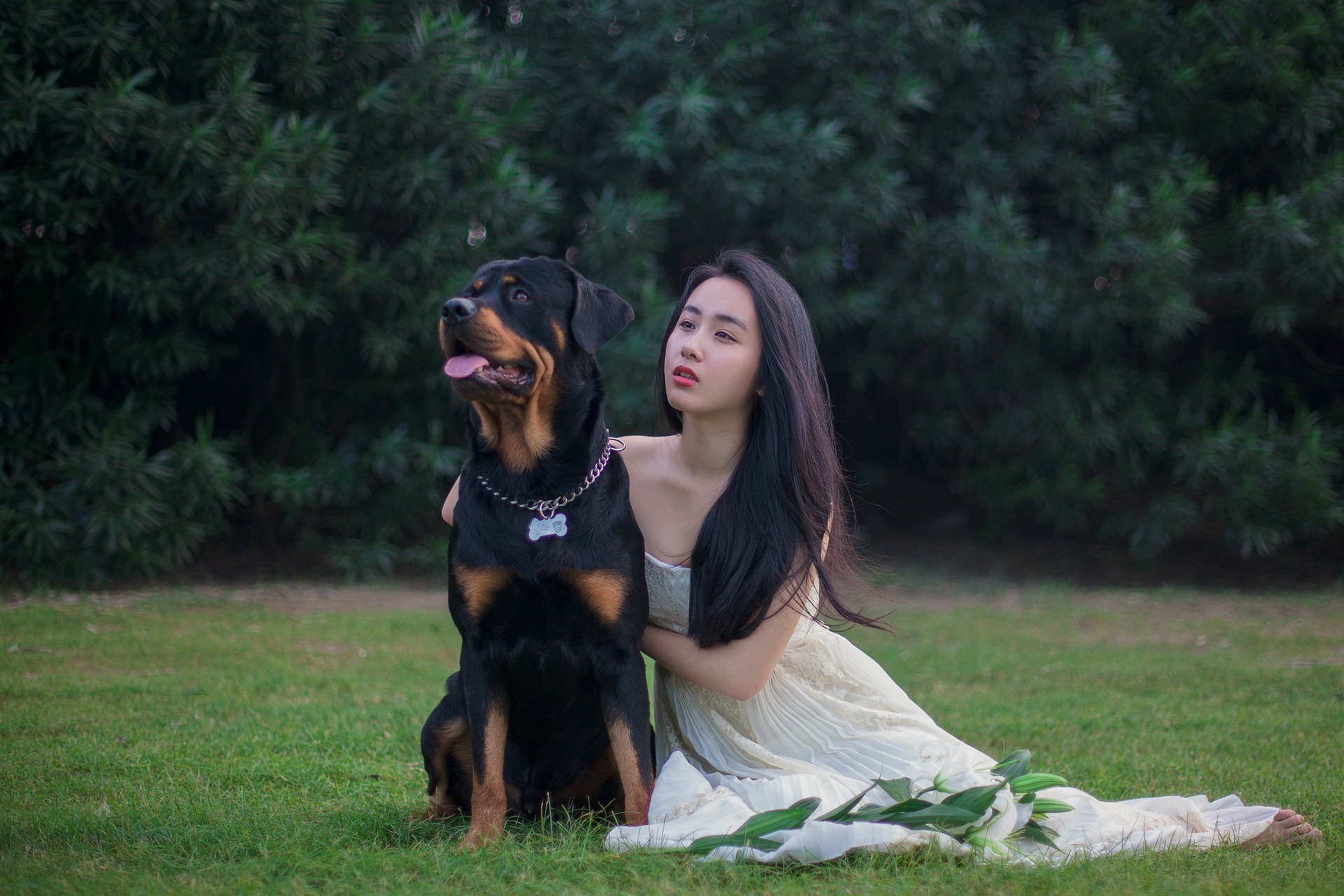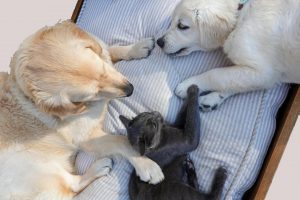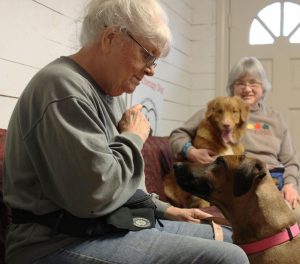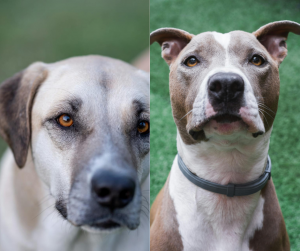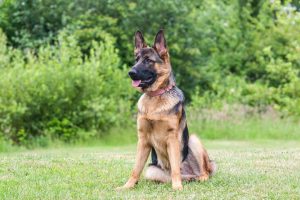The Kangal and the Rottweiler are both strong, protective dog breeds with distinct roles and characteristics. While the Rottweiler is known for its muscular build and suitability as a family protector, the Kangal is recognized for its larger size, strength, and natural guarding abilities, especially in rural or farm settings. When comparing the two, the Kangal generally outmatches the Rottweiler in size and protective capacity, making it better suited for guarding livestock, while the Rottweiler excels as a loyal companion and home guardian.
Both breeds have loyal, protective instincts but differ in temperament and training needs. The Kangal tends to be more independent and reserved, requiring experienced handling, whereas the Rottweiler is often more social and trainable. Understanding these differences can help potential owners decide which dog aligns better with their lifestyle and security needs.
Breed Origins and History
Both the Kangal and Rottweiler have distinct historical backgrounds tied to their original functions. Each breed’s development reflects unique cultural and practical needs, which shaped their physical and behavioral traits.
Kangal Heritage Overview
The Kangal originates from the Sivas region in Turkey. It is a breed traditionally used to protect livestock from predators, primarily wolves and bears. Kangals are linked closely to the nomadic shepherd culture, where their guarding role was critical for flock safety.
This breed is known for its large size and impressive strength, adapted to Turkey’s rugged terrain and harsh climate. Its development emphasizes endurance, loyalty, and protective instincts. The Kangal’s history as a livestock guardian remains central to the breed’s identity today.
Rottweiler Development Timeline
The Rottweiler descends from ancient Roman molossers, brought to Europe by Roman legions. It evolved primarily in Rottweil, Germany, where it worked as a herding and driving dog for cattle. Its history spans back to Roman times, marking it as one of the oldest recognizable breeds.
Throughout the centuries, the Rottweiler has been valued for strength, agility, and trainability. Its role expanded beyond herding to include police and guard duties. This breed was carefully developed for versatility and power in its working roles.
Purpose-Bred Differences
The Kangal was bred specifically as a livestock guardian, focusing on independency, endurance, and deterring predators through size and presence. It typically works in remote, rural environments with minimal human input.
The Rottweiler, by contrast, was bred for herding and driving cattle, requiring close coordination with handlers. Its breeding emphasized obedience and versatility for various working environments, from farms to urban settings.
| Trait | Kangal | Rottweiler |
|---|---|---|
| Primary Purpose | Livestock guardian | Herding and driving cattle |
| Interaction Style | Independent, protective | Cooperative, obedient |
| Geographic Origin | Turkey (Sivas region) | Germany (Rottweil) |
| Historical Role | Protecting flocks from predators | Herding and guarding |
Physical Characteristics
The Kangal and Rottweiler differ significantly in physical build, fur type, and notable features. Each breed’s traits suit their traditional roles—Kangals as large livestock guardians and Rottweilers as muscular working dogs. Their size, coat, and distinctive features reflect this functional divergence.
Size and Weight Comparison
The Kangal is notably larger, with males standing 28 to 32 inches (71 to 81 cm) tall at the shoulder.
Weight typically ranges from 90 to 145 pounds (41 to 66 kg), making it one of the largest dog breeds.
In contrast, the Rottweiler is more compact but heavily built. Male Rottweilers stand 24 to 27 inches (61 to 69 cm) tall.
Their weight ranges from 80 to 135 pounds (36 to 61 kg).
While both breeds are powerful, the Kangal’s taller and leaner frame contrasts with the Rottweiler’s stockier, more muscular body.
Coat and Color Variations
The Kangal’s coat is short, dense, and weather-resistant, designed for outdoor work in harsh climates.
Its fur colors typically include light tan or fawn with a distinct black facial mask.
The Rottweiler has a short, coarse double coat that is smooth and glossy.
Standard colors are shiny black with clearly defined rust or mahogany markings on the cheeks, chest, legs, and eyebrows.
Both breeds maintain low grooming needs due to their short coats but differ significantly in color patterns.
Distinctive Features
The Kangal is known for its broad head, strong muzzle, and large, expressive eyes.
Its long, straight tail is often curled over the back when alert.
The Rottweiler has a wider head with a pronounced stop and strong jaws.
Its tail is typically docked in some countries, resulting in a shorter appearance.
Notably, the Kangal’s bite force is stronger, reflecting its role protecting livestock from predators.
The Rottweiler’s muscular frame conveys power and agility, suited for protection and police work.
Temperament and Personality
Both the Kangal and Rottweiler display strong protective instincts but differ significantly in behavior and social tendencies. Their temperaments reflect their distinct origins and roles, affecting how they behave at home and around others.
General Behavior Traits
The Kangal is known for its calm but assertive demeanor. It exhibits strong territorial instincts and is naturally wary of strangers but remains composed rather than aggressive without cause. Its intelligence allows it to assess threats carefully before reacting.
The Rottweiler is confident and bold, often showing a more overt protective nature. It tends to be more energetic and assertive, requiring firm training to manage its strength and determination. Rottweilers are quick learners but can be dominant if not properly socialized.
Both breeds need consistent leadership to channel their guarding instincts appropriately. The Kangal’s behavior is more reserved, while the Rottweiler is typically more expressive in its reactions.
Family Compatibility
Kangals are generally loyal and protective of their families, especially children. They tend to be gentle with those they trust but need supervision around young kids due to their size. Kangals may prefer quieter family environments because of their calm nature.
Rottweilers are affectionate and often form strong bonds with family members. They can be playful and protective but require early socialization to ensure they are well-mannered with children. They adapt well to active families who provide structure and engagement.
Both breeds thrive in households where they receive clear guidance and consistent interaction. Families should be aware of each breed’s specific needs to maintain a healthy home dynamic.
Interaction With Other Animals
The Kangal’s strong guarding instinct extends to other animals. It can be aggressive or dominant toward unfamiliar animals, especially predators or perceived threats. Kangals often coexist peacefully with livestock, given their history as shepherd dogs.
Rottweilers can show varying degrees of tolerance for other animals. Early socialization is critical to prevent territorial aggression or rivalry. They often do well with other dogs if raised together but may display dominance traits.
Owners of either breed must manage introductions carefully. Providing proper training and supervision reduces potential conflicts with other animals.
Guarding and Protective Instincts
The Kangal and Rottweiler are both known for their guarding abilities, but they excel in different contexts. Each breed combines physical strength with instinctive behaviors tailored to specific protection roles.
Livestock Guardian Skills
The Kangal is specifically bred to protect livestock from predators like wolves and bears. It has powerful jaws with an exceptionally strong bite force, exceeding 700 PSI, which is more than twice that of the Rottweiler. This breed uses intimidation and measured aggression to deter threats without unnecessary violence. Kangals rely heavily on situational awareness and stamina to patrol large rural territories.
Kangals are independent thinkers, trained from a young age to evaluate threats and respond appropriately. Their natural guarding instinct includes close monitoring of flock behavior and territorial boundaries.
Personal Protection Abilities
Rottweilers are bred for personal protection and law enforcement roles. They have a strong, muscular build and a bite force around 328 PSI, sufficient to subdue a threat. Their loyalty and attachment to family make them highly attentive protectors in urban and suburban environments.
Rottweilers require consistent training and socialization to balance their protective nature with obedience. They quickly assess threats to humans and will react decisively when necessary. Their responsiveness to handlers makes them adaptable to personal security tasks.
Territorial Responses
Both breeds respond strongly to territorial intrusion but differ in approach. The Kangal is assertive and uses a commanding presence, often preferring to intimidate intruders before engaging physically. It is vigilant with a natural reluctance to attack without cause.
The Rottweiler shows keen territorial instincts, becoming alert and defensive around unfamiliar people. It tends to bark and position itself between the perceived threat and its family, using physical force if needed. Proper training helps channel this energy into controlled protective behavior.
Training Differences
Training a Kangal and a Rottweiler involves distinct approaches due to their different temperaments and purposes. While both require consistency and patience, their responses to commands, socialization, and learning rates vary according to their breed instincts and energy levels.
Trainability Levels
The Rottweiler tends to be more eager to please and quicker to learn basic obedience compared to the Kangal. This breed responds well to reward-based training and can adapt efficiently when given clear structure and positive reinforcement.
The Kangal, bred primarily as a livestock guardian, has a more independent nature. It shows patience but requires firm, consistent guidance because it can be stubborn and less motivated by praise alone. Kangals may take longer to fully obey commands, especially in new environments.
Both breeds benefit from early training, but the Rottweiler generally displays faster progress, while the Kangal demands a skilled handler who understands its protective instincts and independent mindset.
Socialization Needs
Socialization is critical for both breeds but differs in focus. Rottweilers require extensive social exposure in puppyhood to moderate their natural territorial instincts and prevent over-guarding tendencies around family and strangers.
Kangals need socialization mainly to differentiate between threats and normal social situations. Their job as livestock protectors makes them naturally wary of unfamiliar people and animals. Early, ongoing exposure helps reduce unnecessary aggression or fear but should respect their cautious nature.
In both cases, socialization includes controlled interactions that build confidence and teach appropriate boundaries, ensuring the dogs can function well in family or public settings.
Obedience and Command Response
Rottweilers typically respond well to commands when they understand the purpose behind the task. Their desire to work closely with owners makes them reliable in obedience under consistent training routines.
Kangals may appear less responsive due to their guarding instincts. They prioritize independent decision-making over immediate command compliance, especially in low-stimulation environments. This breed often requires repeated reinforcement and patience to maintain obedience.
In structured settings, both dogs can follow complex commands, but the Kangal needs a trainer familiar with handling strong-willed, protective dogs to achieve consistent obedience. Rottweilers benefit from more straightforward, reward-driven methods.
Exercise and Activity Requirements
Both the Kangal and the Rottweiler require consistent physical activity tailored to their energy levels and natural instincts. Their needs differ due to variations in size, endurance, and breed history.
Daily Exercise Needs
Kangals are large, working dogs originally bred to guard livestock. They benefit from at least 60 to 90 minutes of daily exercise. This can include long walks, free running in secure areas, or hiking. They have strong endurance but prefer steady, moderate activity rather than intense bursts. Kangals need space to move due to their size and build.
Rottweilers require about 45 to 60 minutes of exercise daily. Their activity needs include brisk walks, play sessions, and short runs. While muscular and capable of high-intensity exercise, they generally tire faster than Kangals. Regular exercise helps prevent weight gain and behavioral issues in this breed.
Mental Stimulation Preferences
Kangals thrive with tasks that engage their natural guarding instincts. Training sessions that incorporate scent work, boundary control, or obedience exercises satisfy their mental needs. Repetition and clear commands work well, but they need consistent mental challenges to avoid boredom.
Rottweilers also require mental stimulation through training and interactive play. They excel in obedience, agility, and even protection work. Puzzle toys and problem-solving games stimulate their intelligence. Without adequate mental activity, Rottweilers can become restless or destructive.
Health and Lifespan
Both the Kangal and Rottweiler have specific health concerns tied to their size and breed characteristics. Their lifespans reflect their robust builds but are impacted by common breed-related conditions.
Common Health Issues
The Kangal dog tends to have fewer hereditary health problems but can experience hip dysplasia due to its large size. Joint issues may arise, especially without proper exercise or diet. They are generally resilient but need regular check-ups to catch musculoskeletal conditions early.
Rottweilers face more frequent health challenges, including hip and elbow dysplasia, heart problems like aortic stenosis, and susceptibility to certain cancers. They also may develop bloat (gastric torsion), a life-threatening condition requiring immediate attention. Regular vet visits and health screenings are essential for early diagnosis.
Both breeds benefit from a controlled diet and consistent exercise to minimize obesity, which can exacerbate joint or heart issues.
Lifespan Expectations
Kangals typically live 12 to 15 years, which is relatively long for a large breed. Their lifespan is supported by good genetics and generally sound health, assuming proper care.
Rottweilers generally have a shorter average lifespan of 8 to 10 years, limited by their predisposition to certain diseases. Maintaining optimal weight and managing health risks can help extend their life expectancy.
Owners of either breed should focus on proactive health maintenance to maximize these natural lifespan ranges.
Living Environment Suitability
The Kangal and Rottweiler have distinct needs affecting where they thrive best. Their adaptability varies due to size, energy, and temperament. Housing choices must align with these factors to ensure well-being and proper care.
Urban vs Rural Adaptability
Kangals are bred for rural life, excelling in open spaces with room to roam and guard livestock. Their large size (often around 30-32 inches at the shoulder) and high energy levels make confined spaces challenging. They need space to move freely and perform protective duties.
Rottweilers adapt more easily to urban environments. Their medium size and moderate exercise needs suit apartment or suburban living when daily walks and mental stimulation are provided. They are well-suited as family companions and home guardians in smaller areas.
In rural settings, Kangals outperform Rottweilers due to their endurance and natural guarding instincts for livestock. Rottweilers require structured exercise and socialization regardless of location to prevent behavioral problems.
Housing Considerations
Kangals require sturdy, secure outdoor housing with ample space. They benefit from fenced yards or farmland that supports their guarding role and strong territorial instincts. Indoor living is possible but less common due to their size and tendency to be independent.
Rottweilers can comfortably live indoors if provided with enough exercise. They need space for both quiet time and activity. A secure yard is ideal but not mandatory, as long as owners commit to regular walks and training.
Both breeds require durable fencing and controlled environments to prevent roaming and ensure safety. Noise levels and interaction with strangers should be managed according to each dog’s temperament to avoid stress or aggression.

